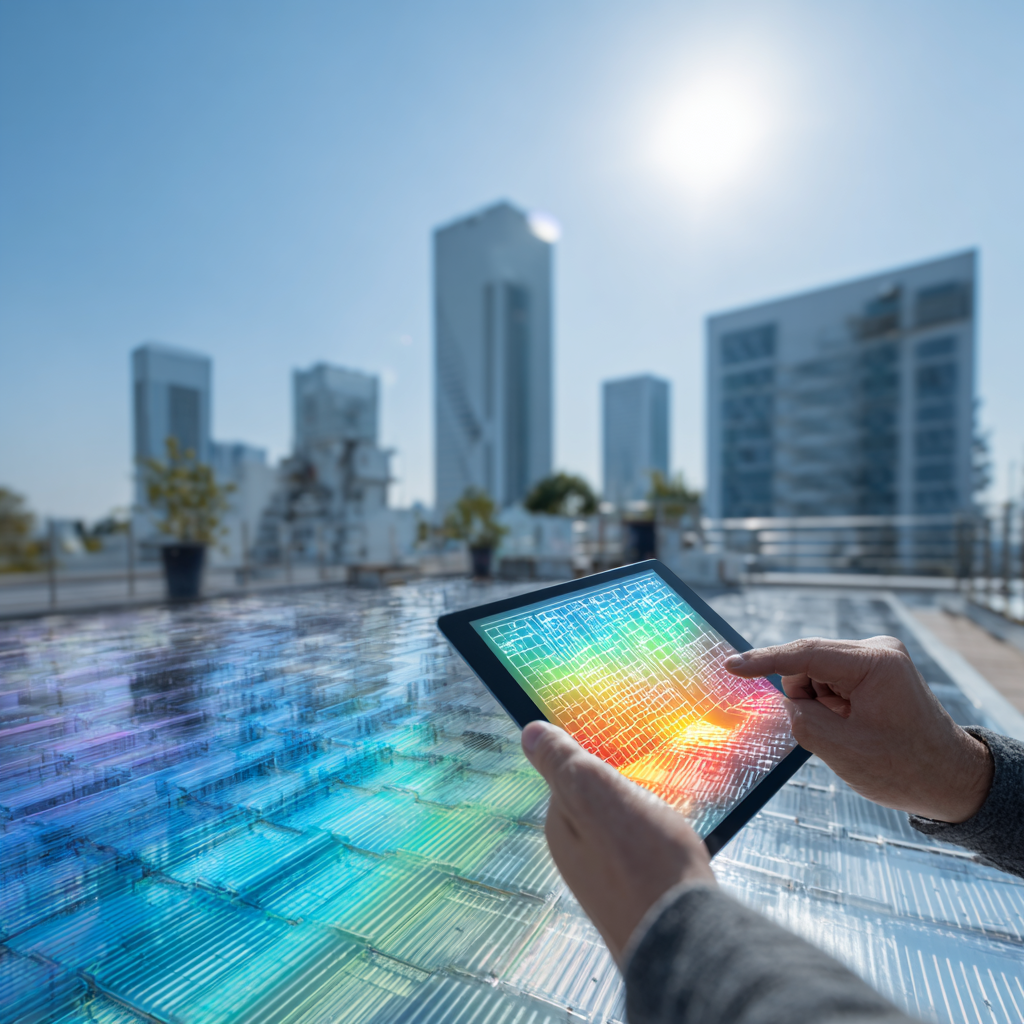A growing climate challenge: the urban heat island
In the face of climate change, cities are particularly exposed to heat waves, amplified by the urban heat island effect. Traditional building materials (asphalt, concrete, glass) store heat and contribute to raising ambient temperatures by several degrees.1. Air conditioning, in turn, increases energy demand and accentuates greenhouse gas emissions.
Against this backdrop, “thermoregulating” materials are emerging as a promising structural response. Their accelerated development today relies on an unexpected lever: artificial intelligence.
Intelligent materials for passive architecture
Thermo-regulating materials are designed to reduce heat transmission between the outside and inside of a building, without consuming electricity. They are sometimes inspired by the natural properties of certain living organisms (bioinspiration) or exploit complex physical phenomena (spectral reflection, thermal emissivity).
Recent innovations include:
- paints that reflect up to 98% of the sun’s rays,
- adaptive coatings capable of changing properties according to temperature,
- nanocomposite structures that modulate heat conduction.
These materials are being tested on roofs, walls and even roads. They promise to reduce interior temperatures by up to 5°C, with a significant impact on comfort and energy consumption.
The strategic role of artificial intelligence in their design
The development of these complex materials is greatly accelerated by artificial intelligence.2. Researchers are using machine learning to :
- predict the thermal properties of new material combinations,
- optimize nano and micro-scale structures,
- model thermal behavior over several seasons or climatic zones,
- reduce prototyping time, thanks to inverse simulation and generative algorithms.
Databases containing thousands of configurations are analyzed by the AI, which identifies those offering the best compromise between solar reflection, durability and architectural integration.
Impacts on the city and construction trades
The adoption of these materials could significantly reduce urban temperatures, limiting heat peaks and reducing the need for air conditioning. It will also lead to a transformation of professional practices:
- Architects will have to integrate dynamic thermal criteria right from the design stage.
- Materials engineers will work more closely with data scientists.
- Urban planners will have to plan passive cooling strategies on a neighborhood scale.
AI is thus becoming an integral part of the building industry’s value chain, calling for new hybrid skills.
Ethical, legal and environmental issues
As with any technological development accelerated by AI, several precautions are called for:
- Safety: materials must meet resistance, fire and toxicity standards.
- Life cycle: sustainability and recyclability must be anticipated3.
- Legal framework: certifications and labels will have to evolve to incorporate “AI-designed” materials.
We must also ensure that these innovations do not create new inequalities in access to energy performance.
Towards a new generation of self-regulating cities?
The coupling of adaptive materials and artificial intelligence opens up ambitious prospects:
- buildings capable of modulating their thermal response,
- neighborhoods whose materials interact with their environment,
- urban planning integrating AI simulation upstream of decision-making.
This dynamic prefigures a new generation of cities that are more resilient, sober and adaptive, where AI becomes an ally of energy efficiency as much as climate comfort.4.
References
1. Nature Communications. (2023). A passive cooling paint with superior solar reflectance.
https://www.nature.com/
2. MIT News. (2024). How AI is speeding up materials discovery.
https://news.mit.edu/
3. European Commission. (2024). Sustainable Construction and Energy Performance Regulation.
https://ec.europa.eu/
4. Science Advances. (2025). Thermal metamaterials for urban heat mitigation.
https://www.science.org//

